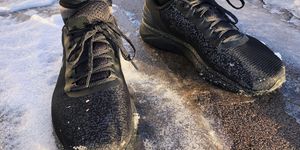Robotic Fish for Cleaning up Microplastics
Microplastics are tiny pieces of plastic, usually about 5mm or less in size. They often develop over time as plastic breaks apart into smaller chunks. Microplastics have emerged as a growing threat to both planetary and human health. For example, a study published earlier this year found microplastics in human lungs for the first time. In the broader environment, microplastics can affect the health of various organisms and the ecosystems they inhabit. Microplastics in bodies of water can even find their ways back to humans.
That’s why finding ways to clean microplastics from the ocean, in particular, has become an increasingly pressing concern. However, given their tiny size, it can seem nearly impossible to do anything about these minute-sized pieces of plastic.
A research team has developed a prototype for a robotic fish that could be an effective tool in cleaning microplastics from the environment. The robotic fish is described in a paper recently published in Nano Letters.
Most of the time, hydrogels and elastomers are common materials used to create devices that can facilitate the clean up of microplastics. However, these materials are not well suited to oceanic environments and can easily degrade. As a result, newer, better materials are needed to help robotic fish reach hard to reach places. The research team drew inspiration for a new material from mother-of-pearl. Also called nacre, mother-of-pearl is an organic material produced in certain types of clams and mollusks. On a microscopic level, mother of pearl is made of various layers of gradients that consist of silk proteins and calcium carbonate.
The research team recreated this layered gradient approach to produce a small, robotic fish (about 15mm long). The robot could absorb certain microplastics and move them to a different location. The material the robot was made of also had the ability to fix itself. With its ability to clean plastics and relative durability, researchers believe their prototype offers a new approach to microplastic cleaning in hard to reach areas of the ocean.
Sources: Science Daily; Science of the Total Environment; Nano Letters








